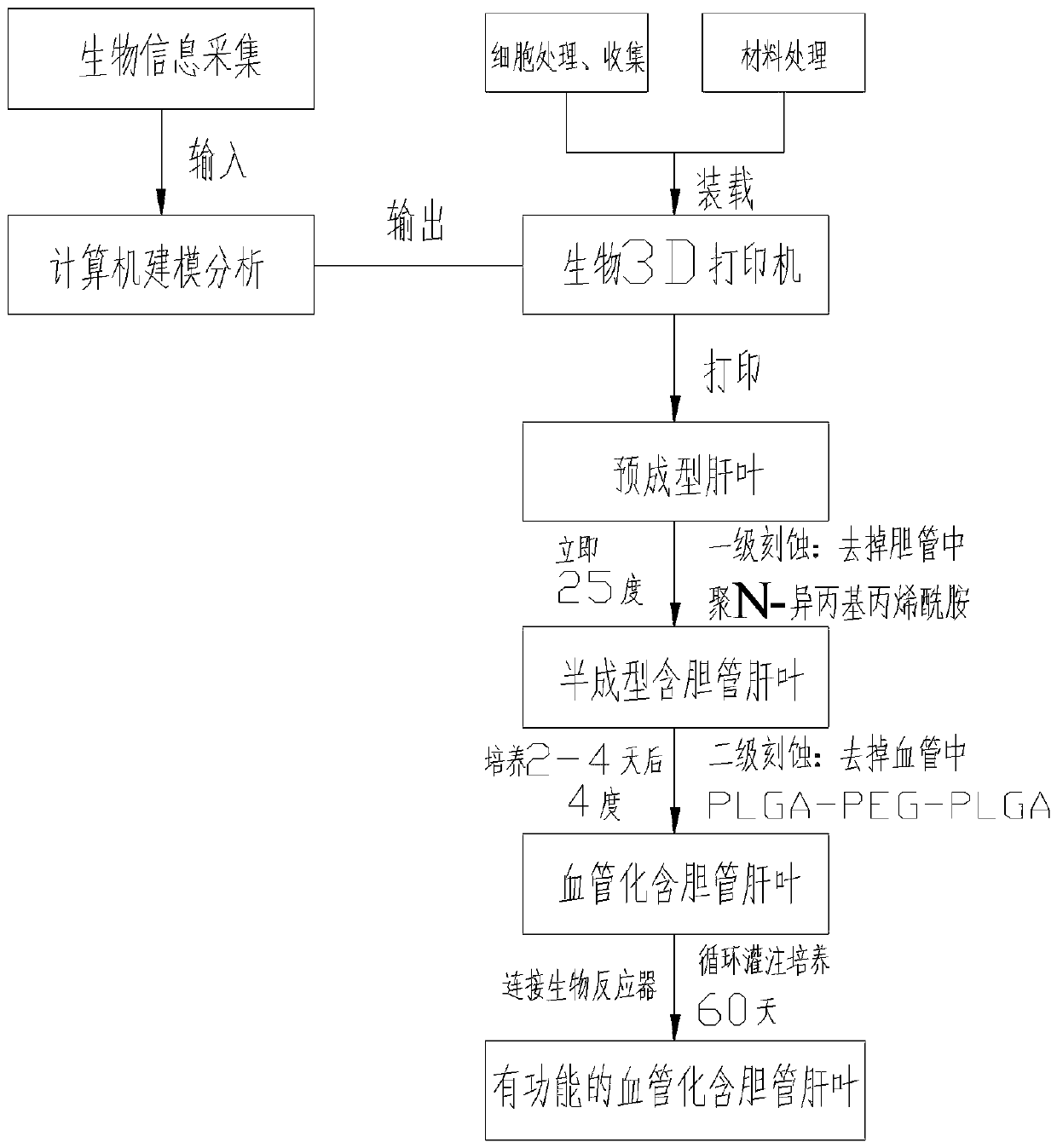Method for constructing biomimetic vascular net in large-volume tissue engineering tissue organ
A bionic blood vessel and tissue engineering technology, applied in the field of biomedical engineering, can solve problems such as simple network structure, supply barriers, lack of bile ducts, etc., and achieve the effect of mechanical strength
- Summary
- Abstract
- Description
- Claims
- Application Information
AI Technical Summary
Problems solved by technology
Method used
Image
Examples
Embodiment Construction
[0037] In the present invention, the preparation of the blood vessel network in the artificial liver lobe containing bile duct is taken as an example to illustrate the method of the present invention.
[0038] see figure 1 , this embodiment discloses a method for preparing an artificial liver lobe containing bile ducts based on bio-3D printing technology, comprising the following steps:
[0039] 1. Biological information collection and modeling:
[0040] 1) Personalized collection of three-dimensional data of the internal and external structures of the liver lobe containing bile ducts and the blood circulation network of normal people through CT, nuclear magnetic resonance and micro three-dimensional scanning technology;
[0041] 2) Input the collected biological information into the computer software, and imitate the actual tissue appearance and microenvironment to express it as a multi-material, multi-scale geometric model (the two ends of the vascular network are designed ...
PUM
 Login to View More
Login to View More Abstract
Description
Claims
Application Information
 Login to View More
Login to View More - R&D
- Intellectual Property
- Life Sciences
- Materials
- Tech Scout
- Unparalleled Data Quality
- Higher Quality Content
- 60% Fewer Hallucinations
Browse by: Latest US Patents, China's latest patents, Technical Efficacy Thesaurus, Application Domain, Technology Topic, Popular Technical Reports.
© 2025 PatSnap. All rights reserved.Legal|Privacy policy|Modern Slavery Act Transparency Statement|Sitemap|About US| Contact US: help@patsnap.com


